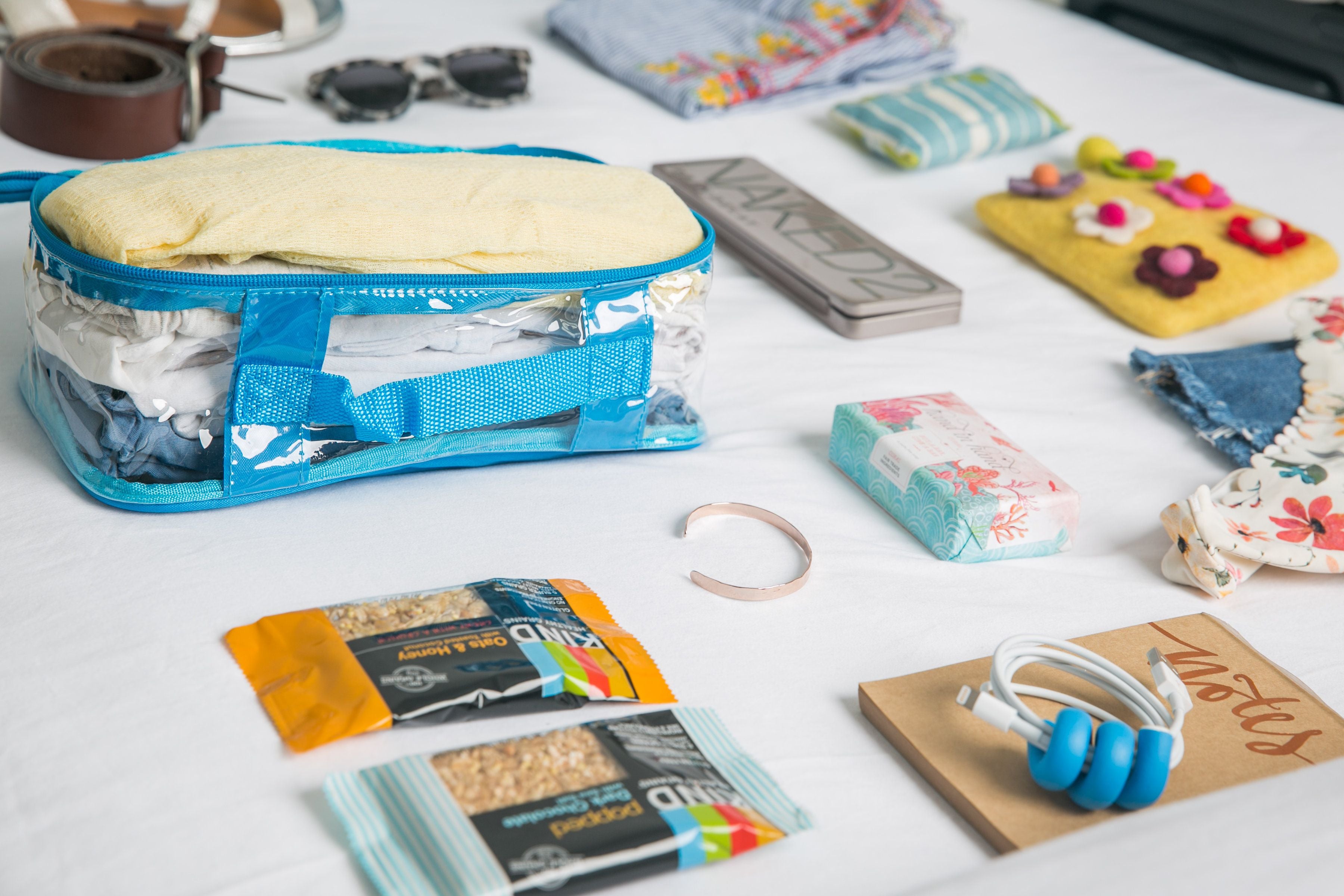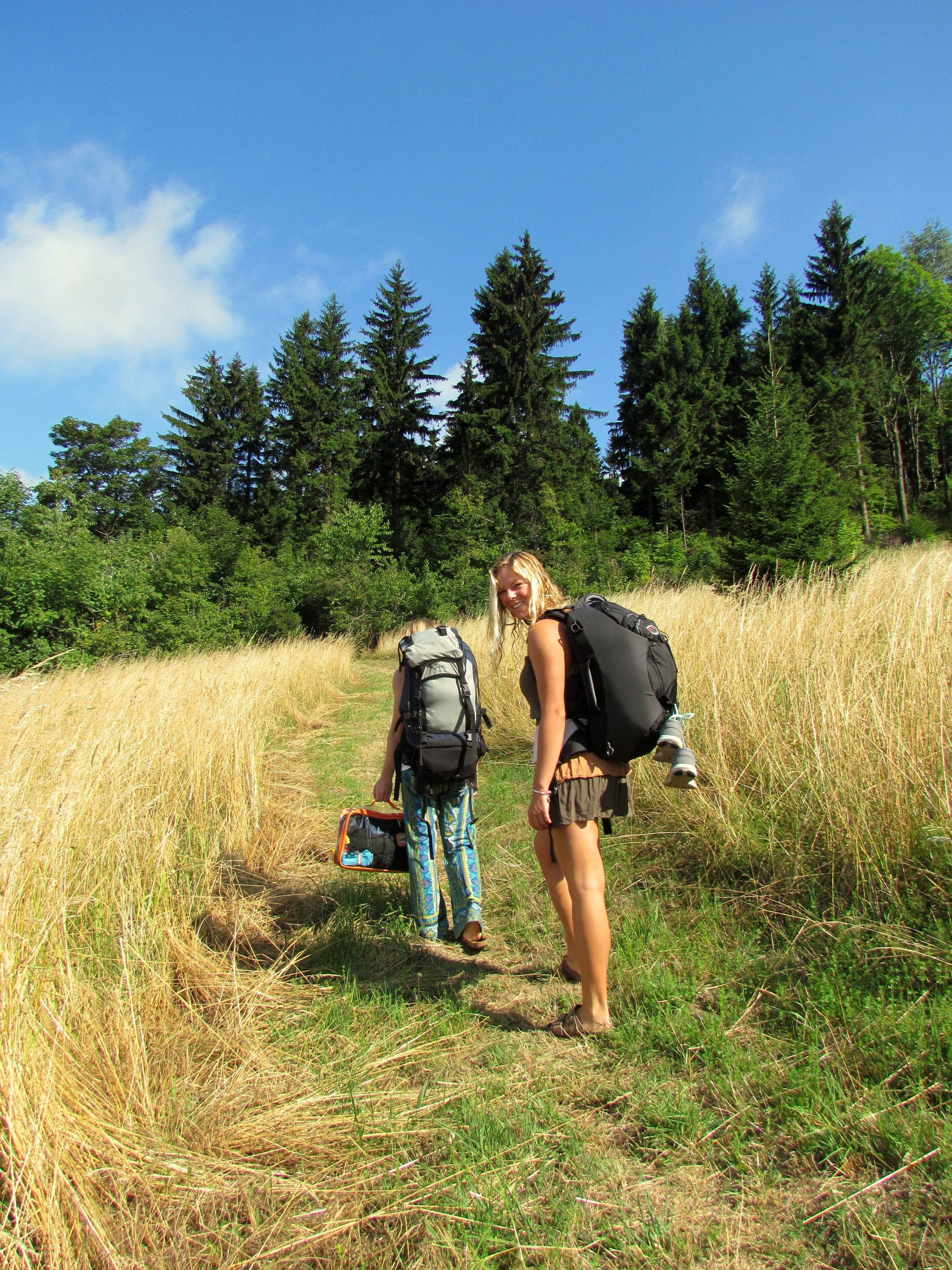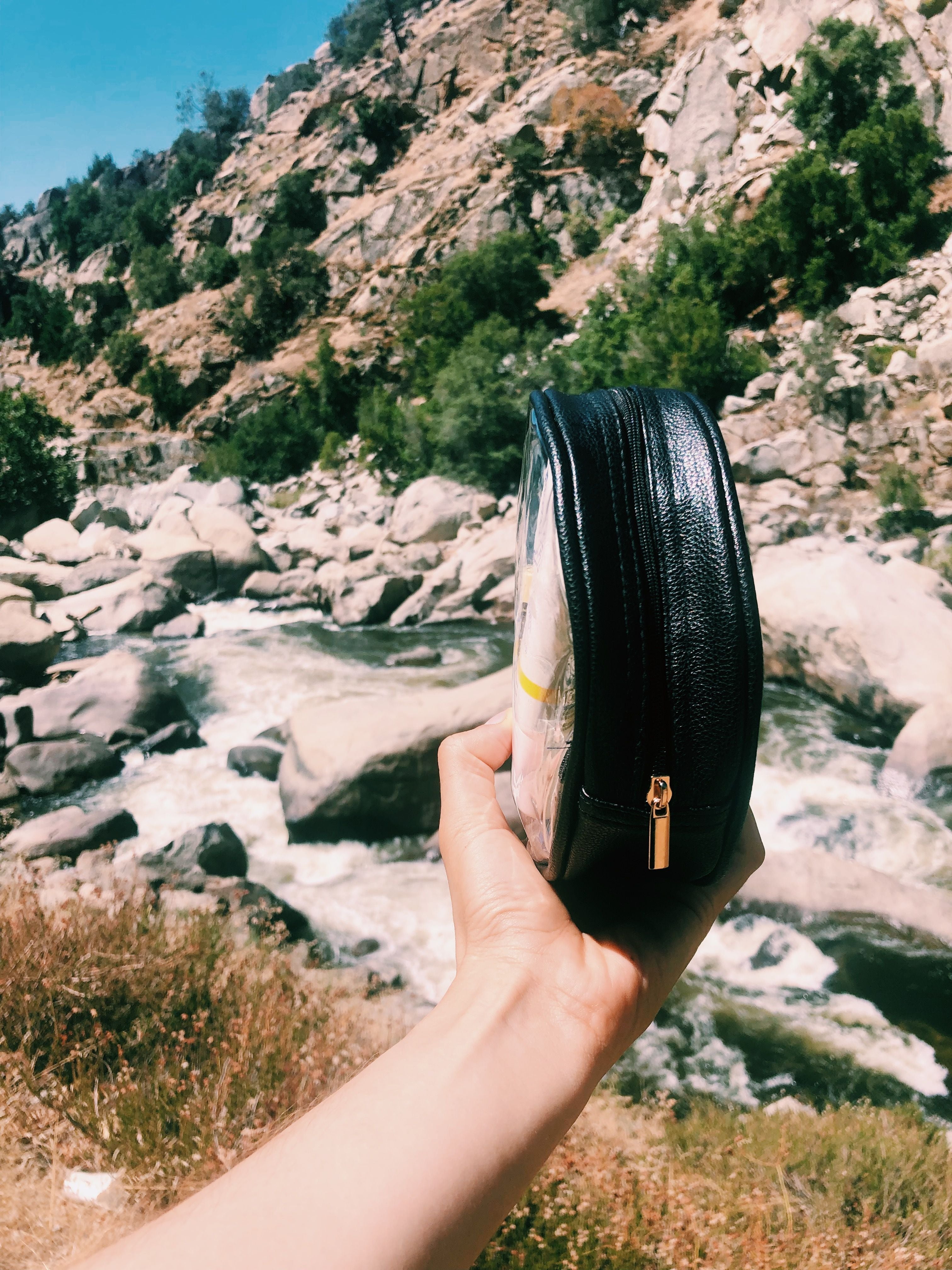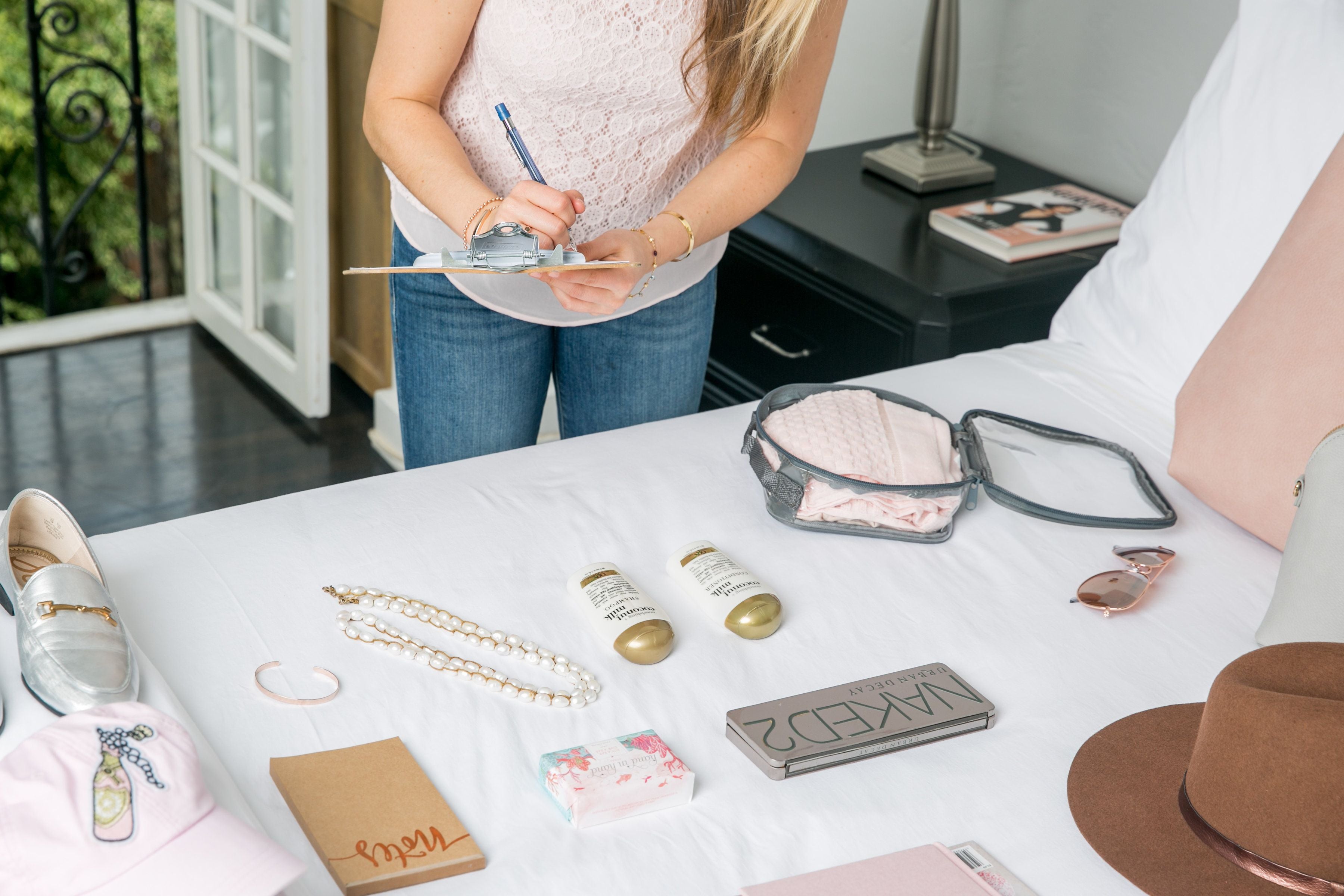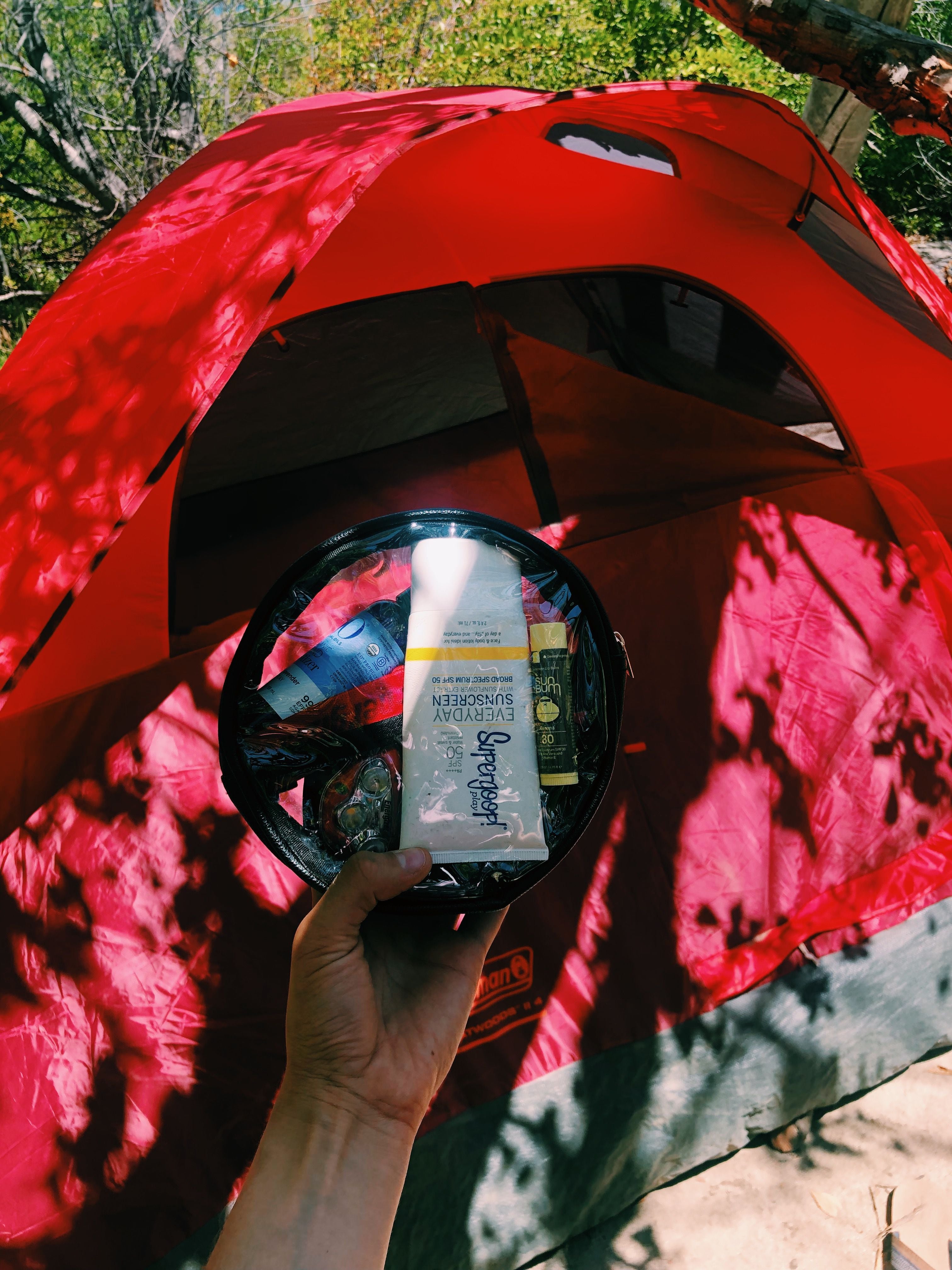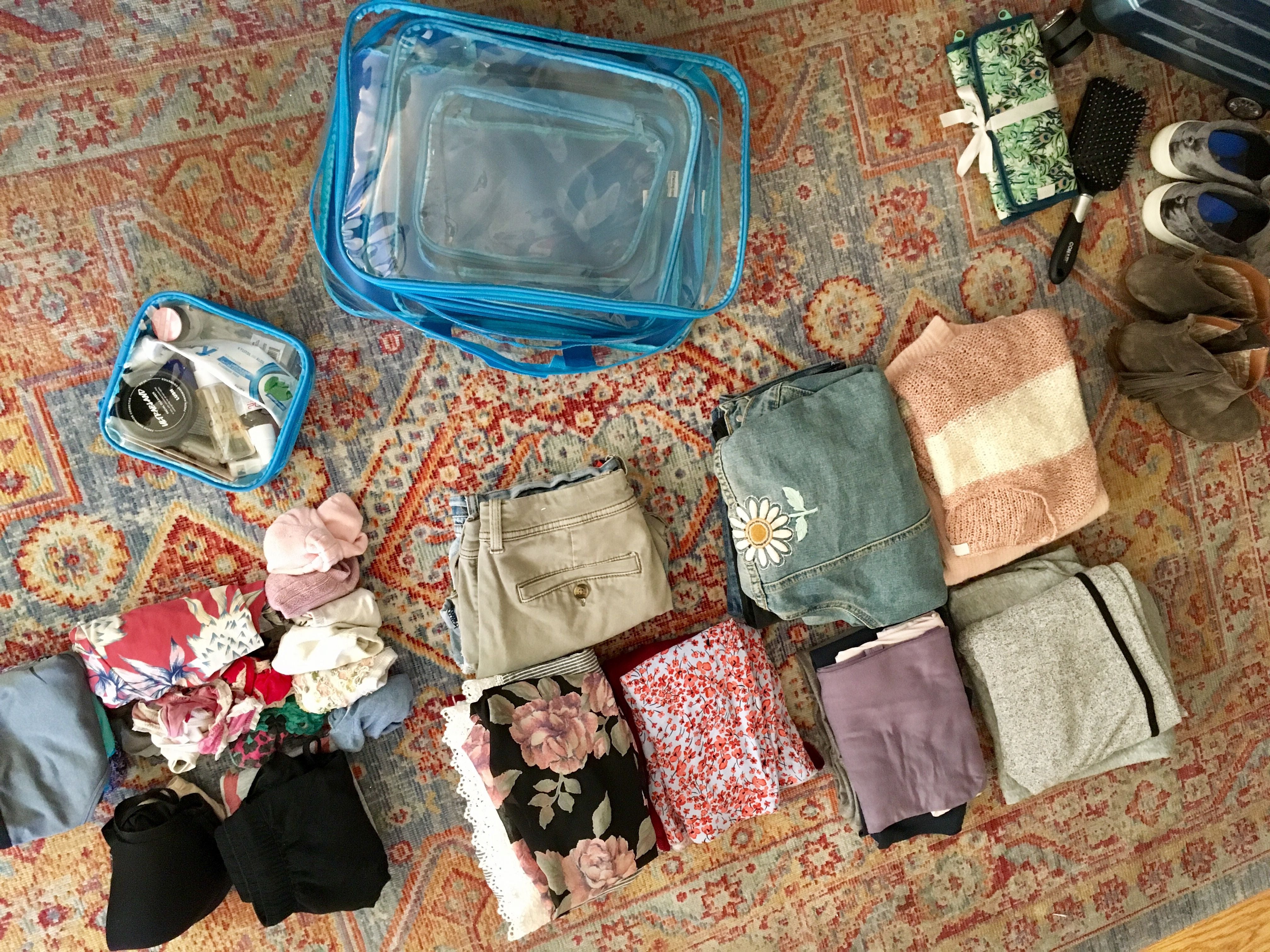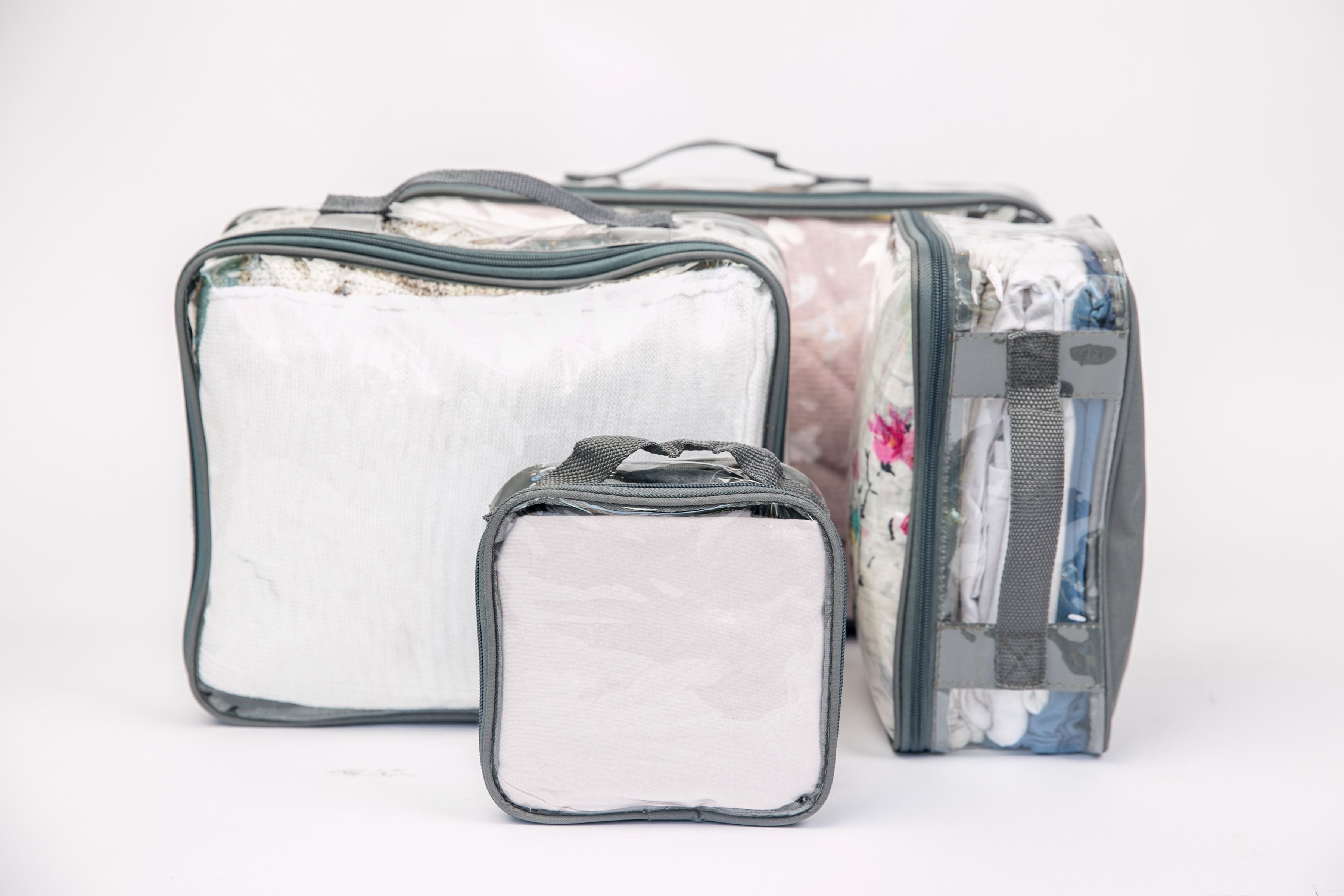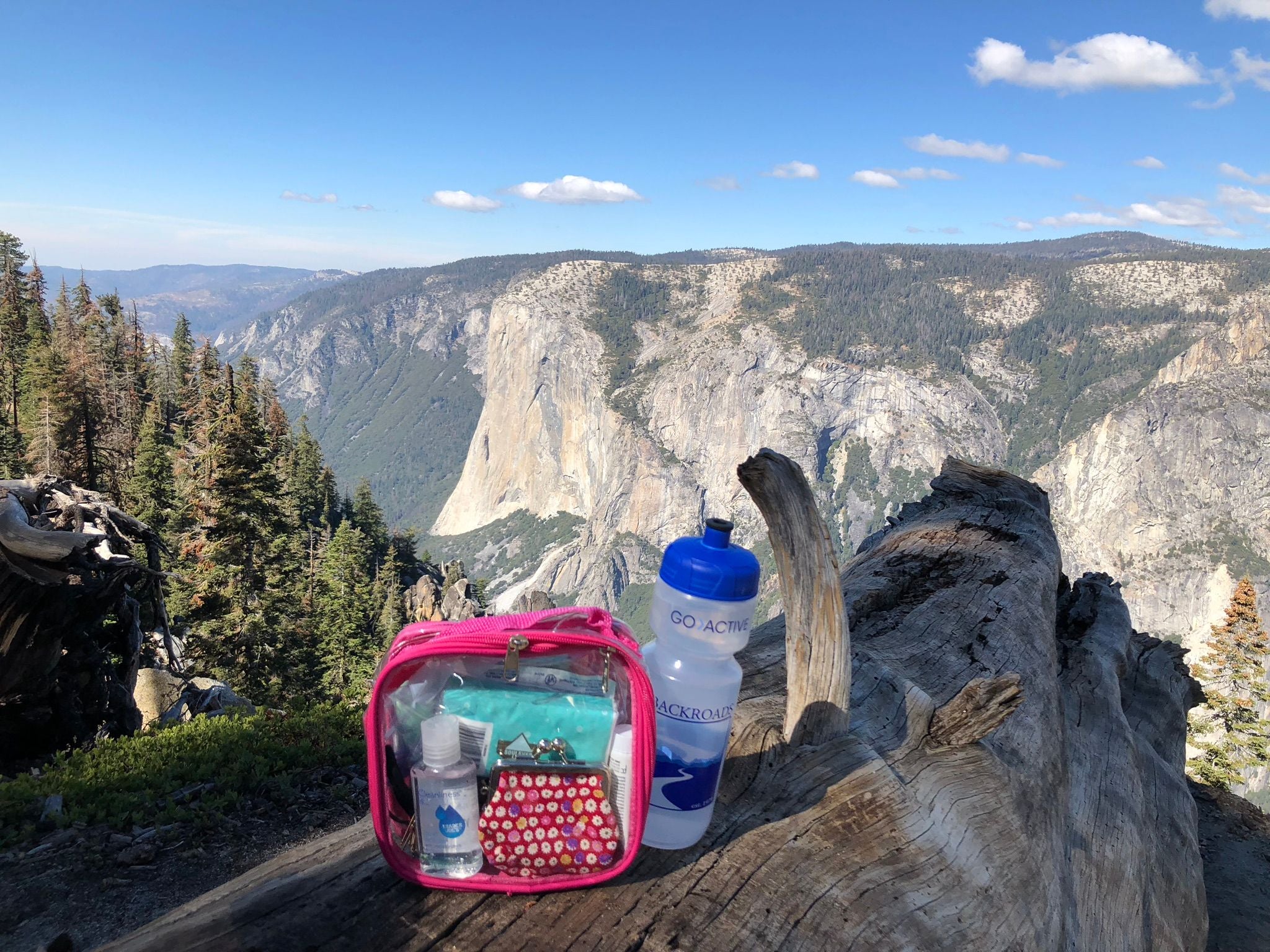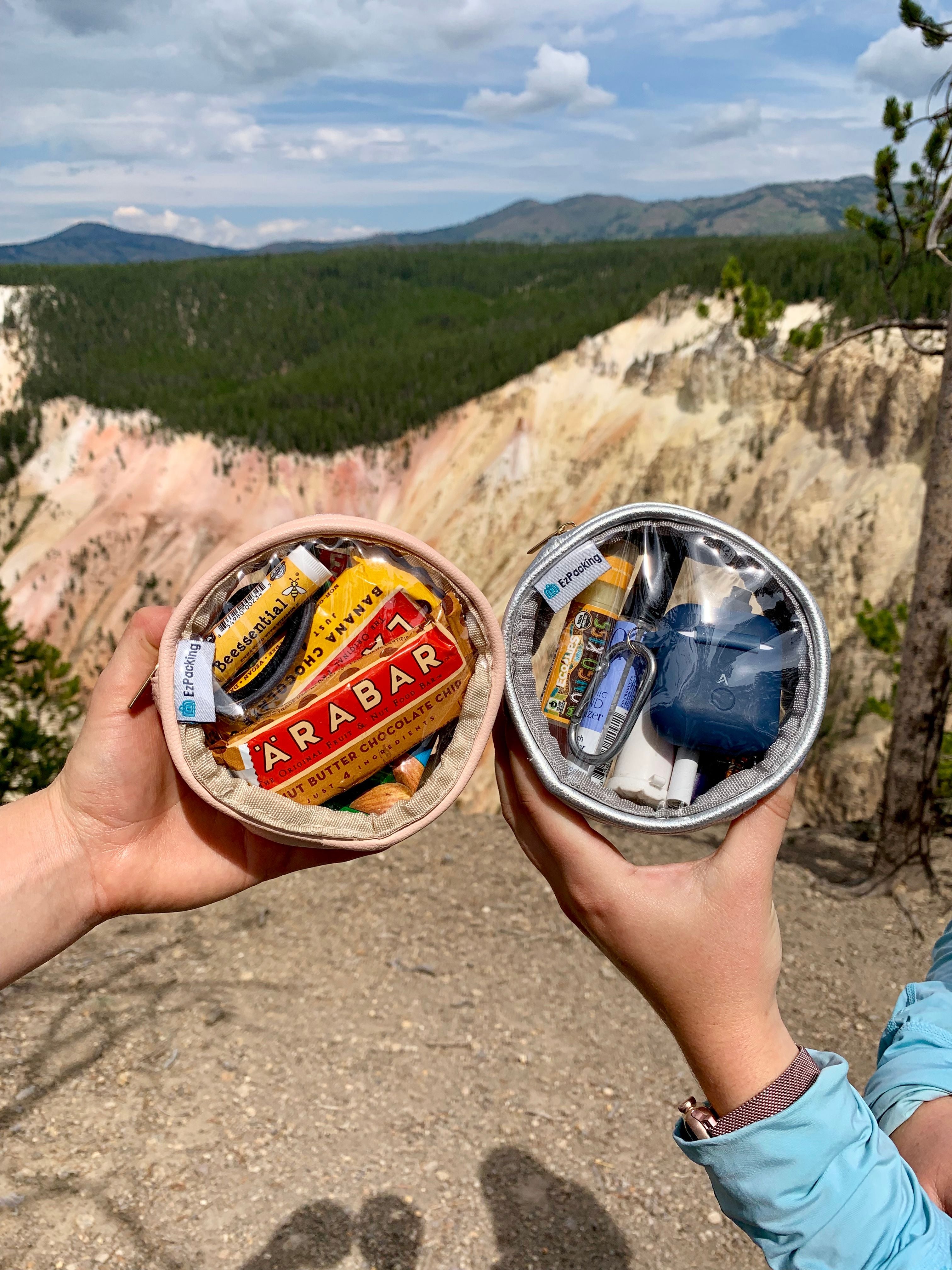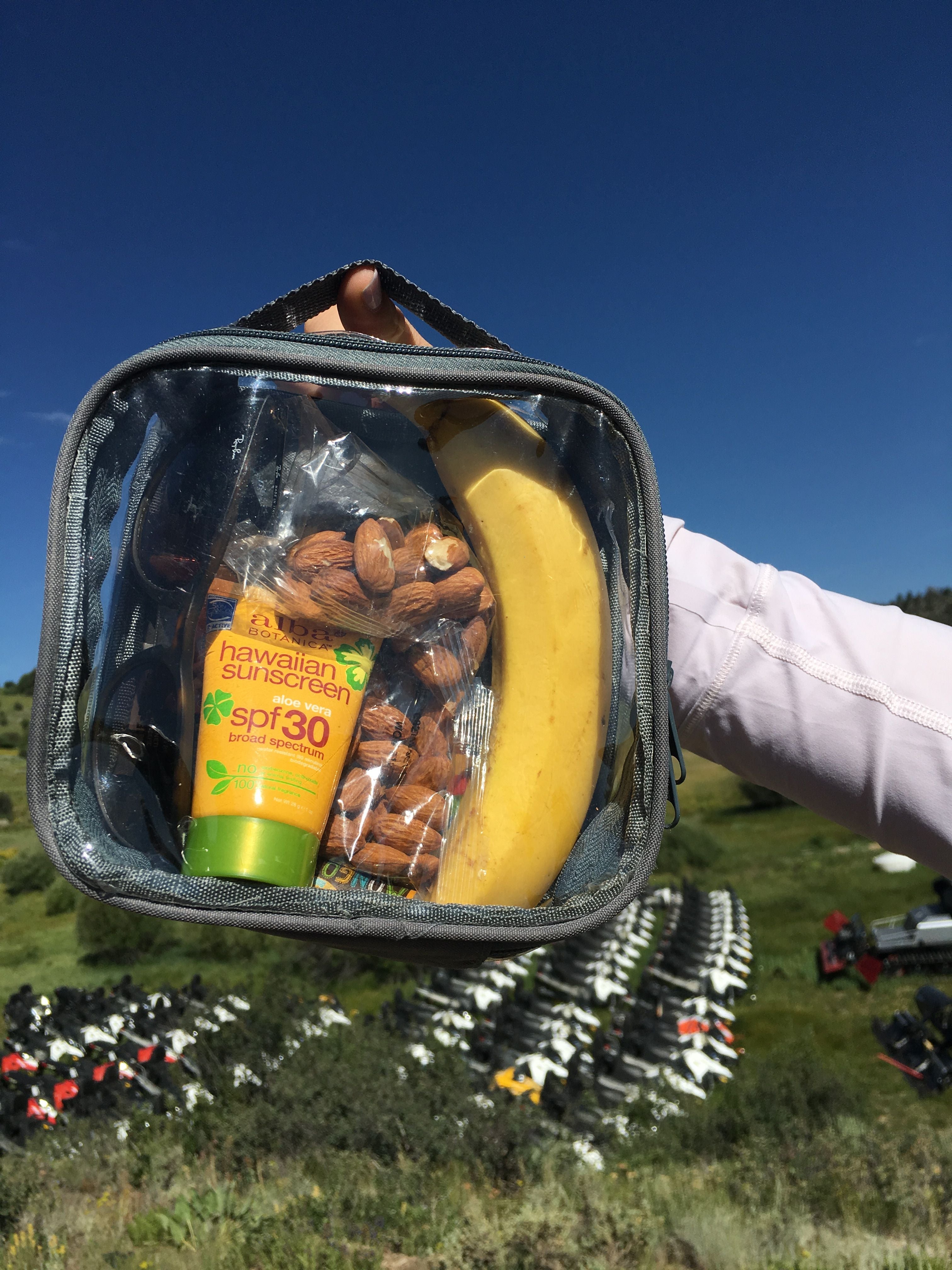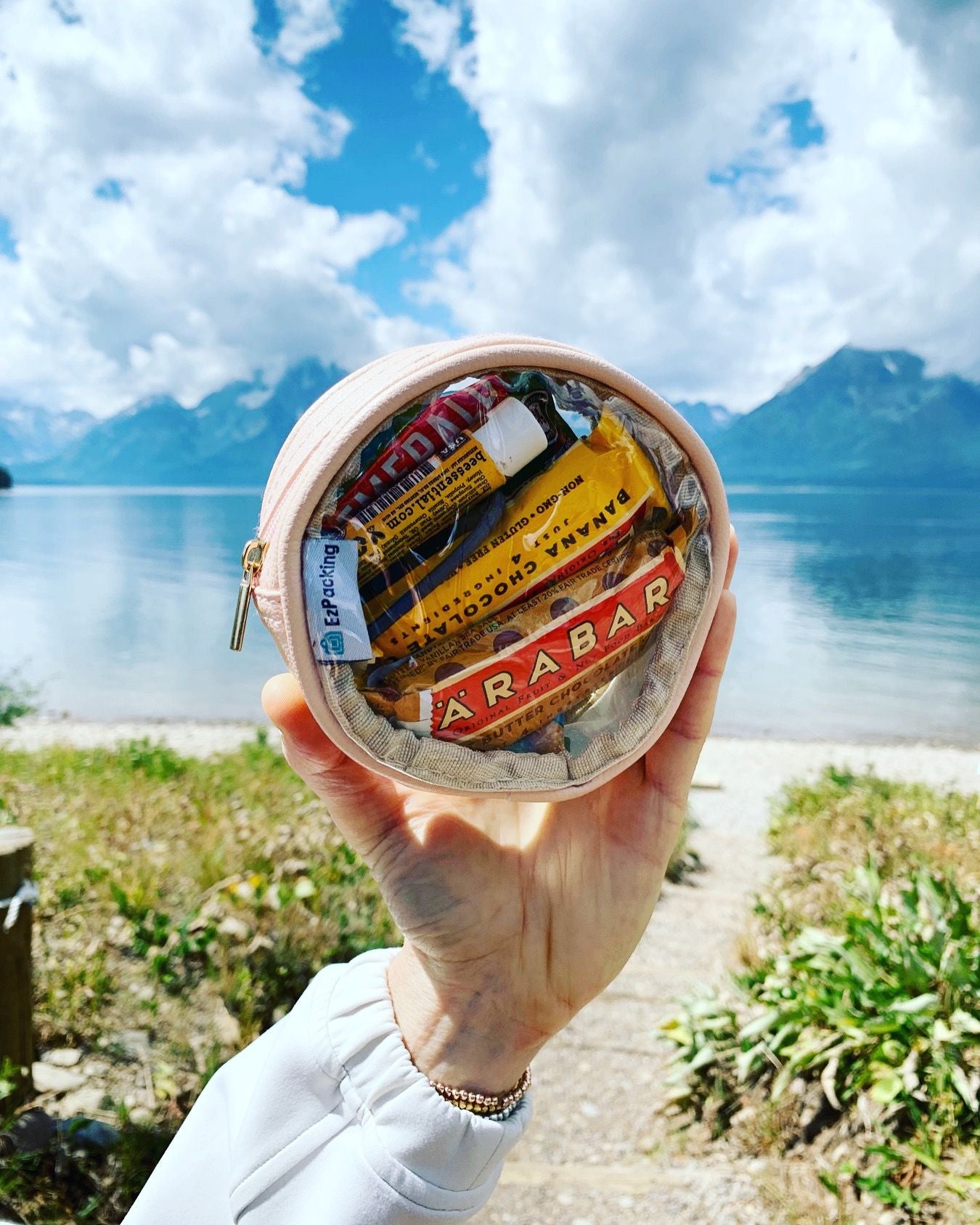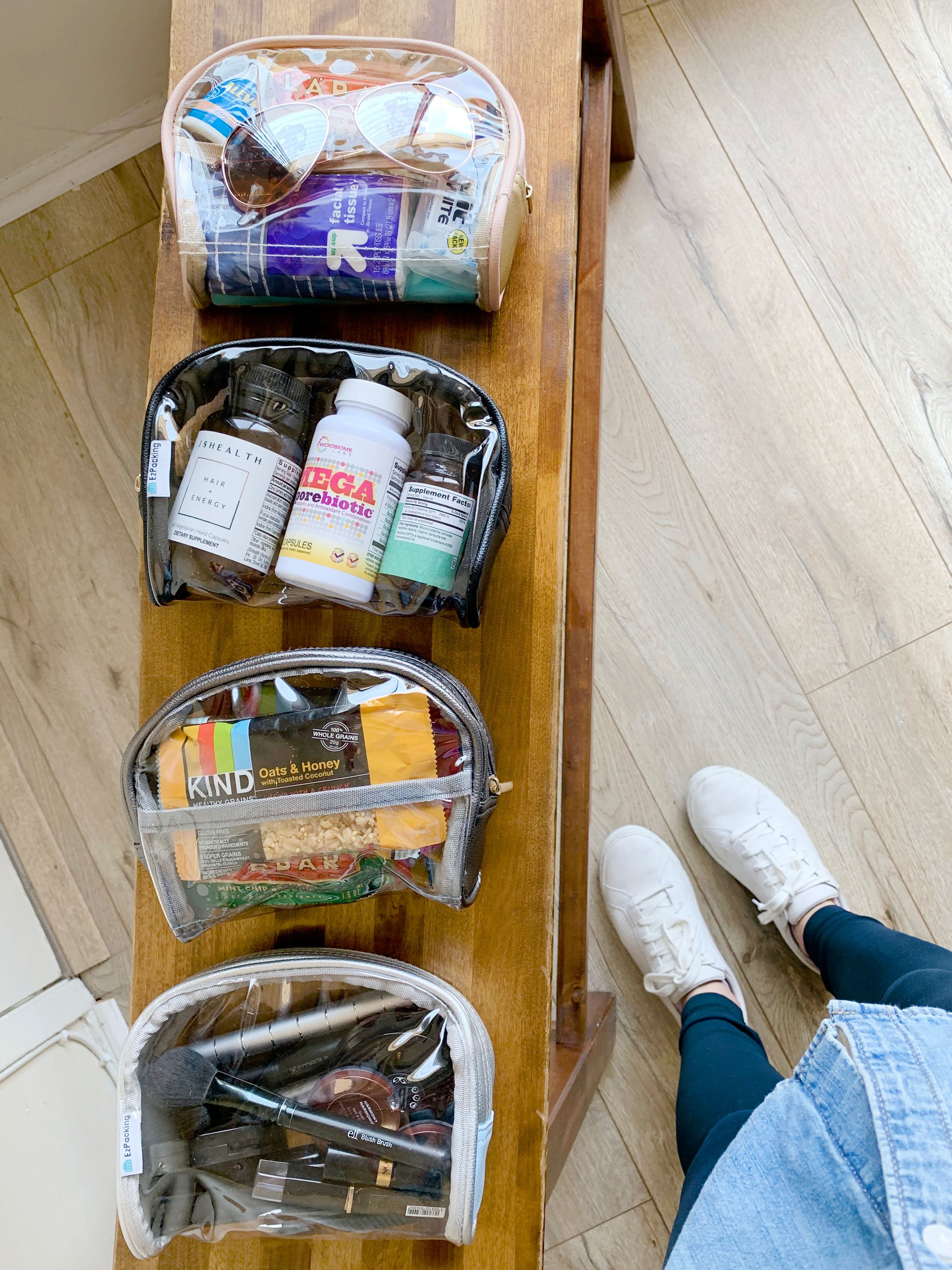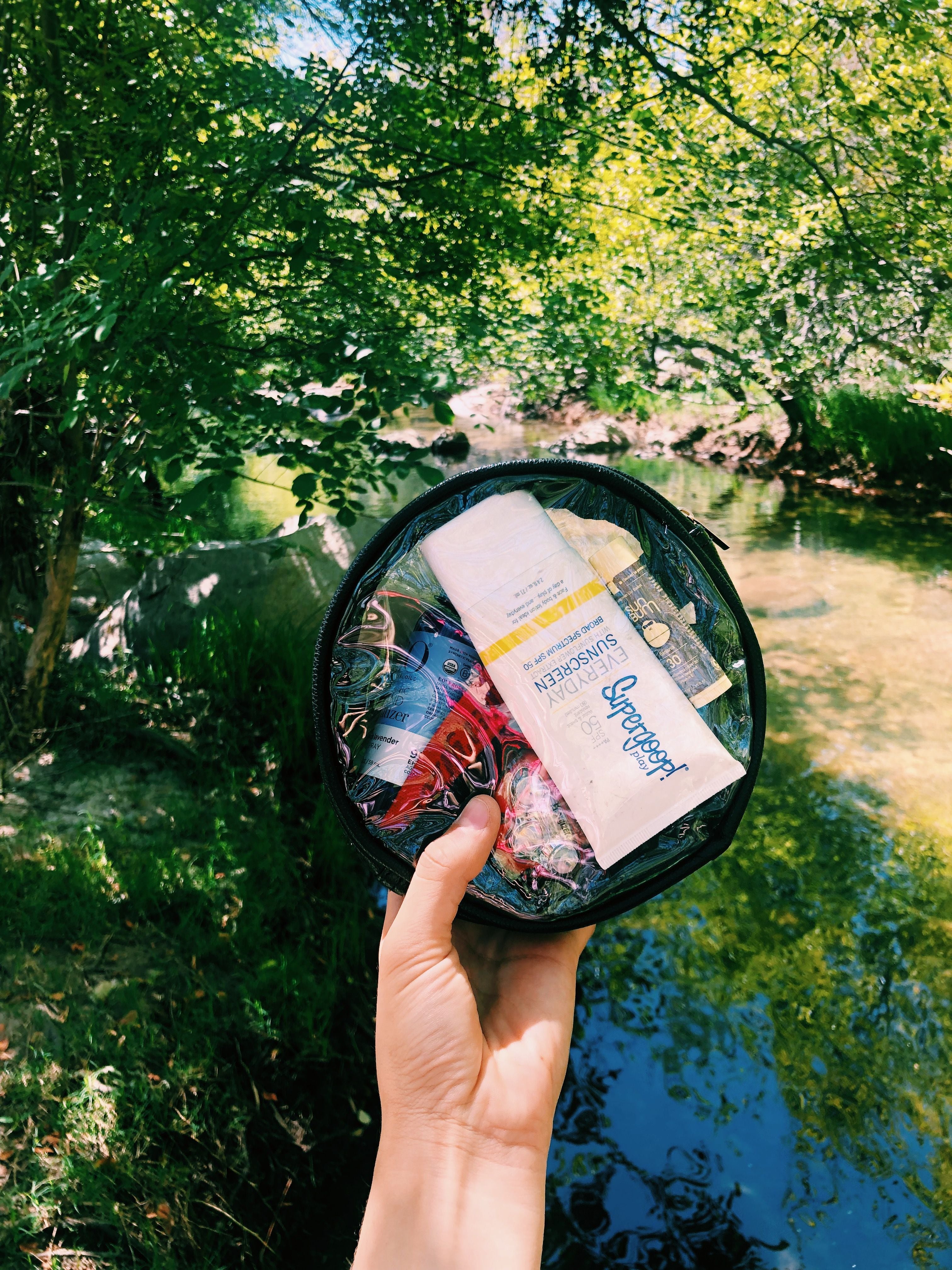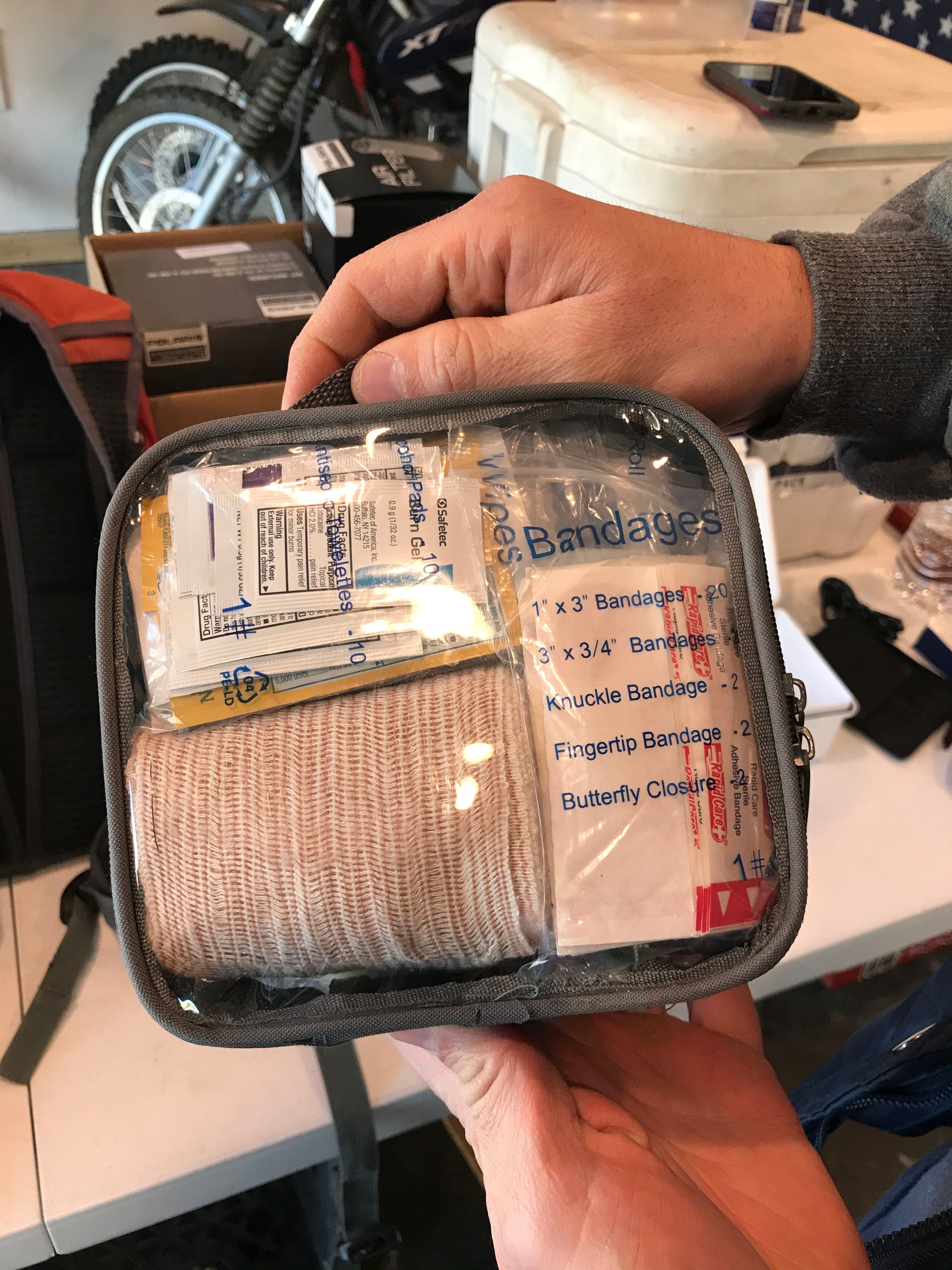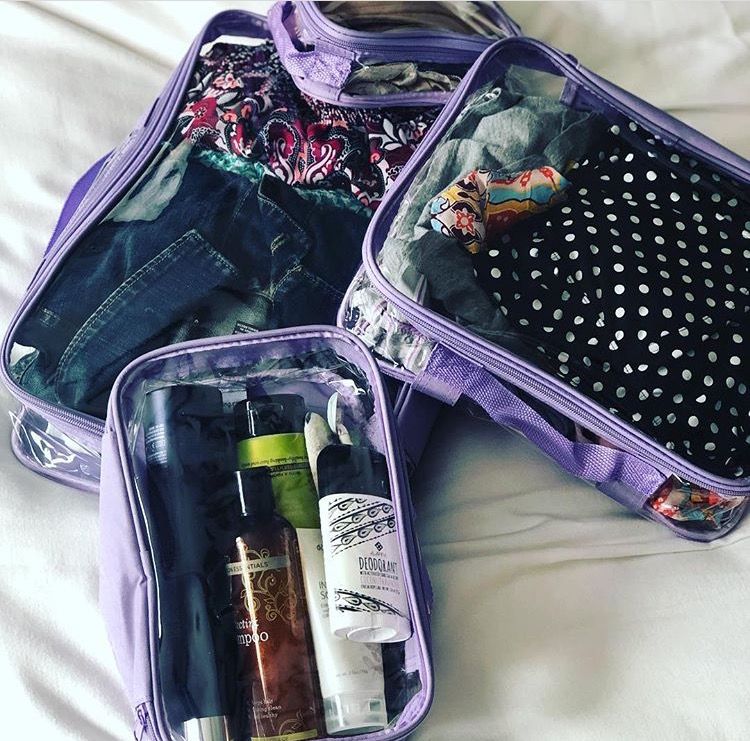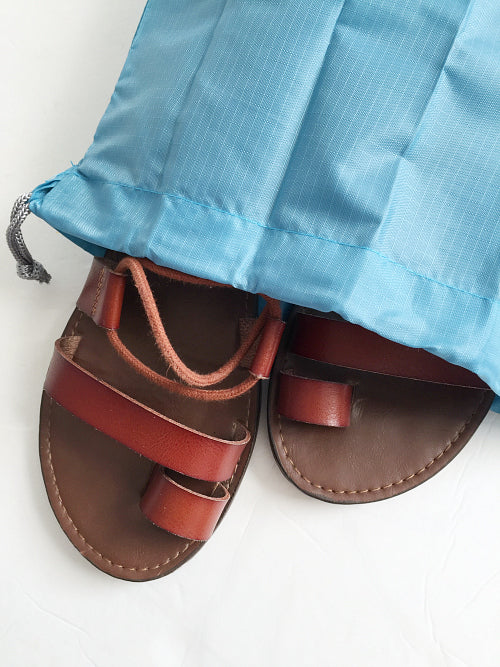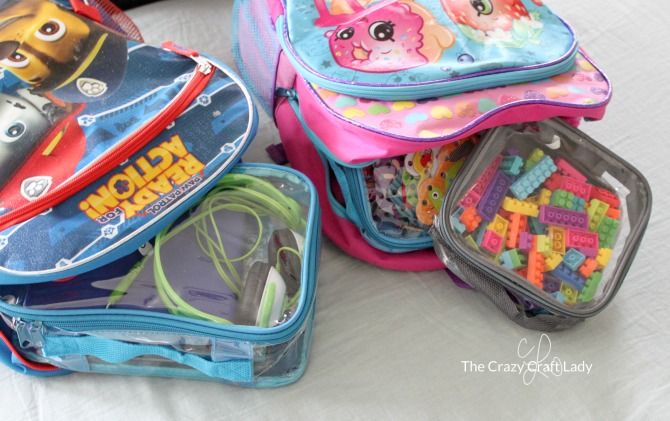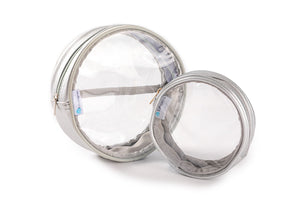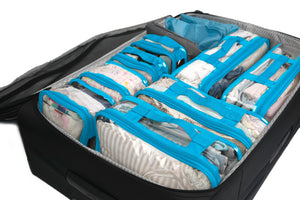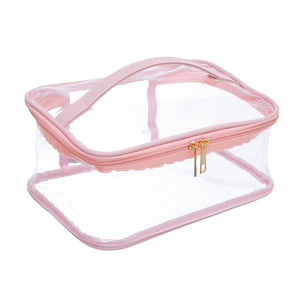The Ultimate Camping Trip Packing List: Tips + Free Checklist
Posted by Bea Manzano on
Ahh, the great outdoors. There’s nothing like escaping the buzzing city life once in a while and getting a decent dose of nature. Or maybe you're stuck in quarantine and just want some fresh air! Either way, having a camping trip packing list is always handy whether it’s your 1st or 50th time.
Things can be quite unpredictable in the woods. You can be one step ahead if you’re ready with the right tools, gear, and a little bit of knowledge. That being said, let these tips and our free camping checklist be your guide to nailing the adventure that awaits you.
Camping Trip Checklist: Things to Know Before you Go
It’s a wide wild world out there. You best come prepared. Here are some things you need to do before you pack for the trip. Make sure to check all these things so you can pack like a pro and camp like a champ.
✓ Do your research
There are so many things that you need to know before packing and going out there. If you know the answers to these questions, you can skip ahead to the next bit.
☐ Where are you going? Research some campsites or possible campgrounds that you want to camp in. If you want to know which campgrounds are near you, visit this website. To find legal and safe campsites, check out this website.
Pro Tip: Know the area. Learn your way around the route and bring navigational tools that can assist you like a compass, a map, and a GPS. If it’s your first time camping, learn how to use these tools before you go!
☐ How long are you planning to camp out? This will help you plan and pack accordingly. It will also help determine the number of items you are going to carry and how willing you are to carry those items in those number of days.
☐ What are you going to do once you get there? This depends on the area that you're going to camp in. You can choose to hike, climb, swim, fish, do yoga, slack-line, read, or just plain relax and do nothing.
☐ Is there potable water at the campsite? - This is where research is important. Check the website of the camping site so you’ll know how much water you need to bring. Most, if not all, campgrounds have a water source like a spigot that can be used to fill up your water bottles. In case you get stuck somewhere without potable water, bring a water bottle with a filter or a LifeStraw.
☐ Is showering an option while camping? Also depends on the location. If your campsite is near a lake or river, then you can bathe as much as you want. Some campgrounds also have showers. Look it up online. If it doesn't, you can set up a portable shower or just carry some bath wipes and deodorant wipes with you to keep you feeling fresh and clean.
☐ How will you cook your meals? Campgrounds normally don’t allow campfires during the dry season to avoid bush / forest fires. However, you can bring your own portable gas stove, pots and pans to cook with. Don't forget to follow fire safety regulations.
☐ Do you have to pay to camp in a certain area? National parks require a pass, so make sure you secure one if you’re planning to camp in one. There are also free campsites that you can look up. However, if you want a campsite with showers and picnic tables and all the necessities, then you can definitely spare to spend some bucks.
✓ Check the weather
The gear and clothes you pack all depends on the weather. Depending on the area, there might be some activities that you aren't able to do. If it's raining and muddy, you probably won't be able to hike or climb.
Pro Tip: Dress in layers and make sure to bring rain gear or a poncho, your tent's rain fly, and some cool activities you can play inside the tent if you are faced with bad weather.
✓ Tell someone about your trip
Inform your family or friends ahead if you're going solo or duo. Make sure they know the exact campsite you're going to, when you’re leaving and the exact day you will be coming back. If something goes amiss, they'll be your best chance of getting help.
Camping Essentials Checklist
These are the camping necessities you need to bring. You can change things up a bit according to your needs. This is just to get you started and to make sure you don’t leave out the essentials.
SHELTER & BEDDING
🗹 Tent - A four-people tent is ideal for two people only - that is if you want to sleep comfortably. Four people can fit inside but with the head to toe, toe to head basis of sleeping, which is similar to that of a can of sardines.
🗹 Pegs - Basically there are 4 types of pegs. Sand / plastic pegs, wire pegs, rock, and V-shaped steel pegs. Make sure to choose the right one for the area where you’re camping.
• Plastic pegs are good for sand or soft areas. Easy to pull back out but have a strong hold.
• Wire pegs are cheaper and they twist in the ground. However, do not rely on them as your only peg because they're easily bent. They’re good for lawn or caravan camping.
• Rock pegs are made of steel or titanium. They're good for camping on hard ground. They're also very good anchor points.
• V-Shaped steel pegs are good on most soils. They don't twist in the ground and the long ones also work well in sand.
🗹 Guy Line Tensioner - If you don't know how it works, check out this tutorial video.
🗹 Sleeping Bag / Quilt - Choose a lightweight sleeping bag that can keep you warm and comfortable especially on a cold night.
🗹 Sleeping Pad / Mattress - Must have especially if you’re camping in a rather rough area.
🗹 Camping Pillow - You can also substitute a folded towel or a rolled thick piece of clothing like a sweater or pants to rest your head at night.
🗹 Tent Groundsheet - Use a tarp that's wider than the tent itself. You can put your shoes or slippers on it before you enter your tent.
🗹 Mallet (for tent pegs) - Your hammer from home will definitely do. Don't bother with those plastic hammers they sell at the store or you'll be hammering all day.
🗹 Sunshade / Rain Tarp - The weather can be quite unpredictable when you’re at the site. Bring a tarp that can double as a sunshade when it’s too hot, and a rain tarp if it starts pouring.
🗹 Duct Tape / Tenacious Tape - In case of an emergency or when something tears or rips, there’s absolutely nothing that duct tape can’t fix. Weatherproof tenacious tape is also good for repairing holes in outdoor gear and fabrics.
🗹 Small Broom / Dustpan - Keep your area spick and span with a small broom and dustpan. It’s also good for getting dust and little stones out of your tent.
🗹 Camping Lantern - It’s important to keep your base camp (and inside your tent) lit during the night. This camping lantern from Ryno is perfect - it’s lightweight, remote controlled, waterproof, rechargeable and has a yellow light to repel mosquitoes.
🗹 Camping Cot - Take time to relax and take in the fresh air while lounging in your very own camping cot. Pack one that’s easy to fold and light to carry.
🗹 Sleeping Bag Liner - To keep your sleeping bags clean and dirt / dust-free.
🗹 Extra Blankets / Sheets - Bring extra blankets for unexpected temperature changes. The extra sheets can also be rolled and used as a makeshift pillow.
🗹 Air Pump for Mattress - To inflate / deflate your camping mattress easily.
🗹 Bug Net - To keep bugs and other insects away.
CAMPSITE GEAR
Make sure your tools and gear are functional. Test your tents, shoes, and any climbing or rappelling gear BEFORE you leave to avoid accidents during your trip.
🗹 Camp Table (if no picnic table)
🗹 Camp Chairs (or logs at the site)
🗹 Lantern (+ extra batteries)
🗹 Hammock (with tree straps)
🗹 Tablecloth
🗹 Clothesline
🗹 Garbage Bags
Friendly Camper Reminder: Leave no trace! Don't leave anything behind. Whatever you packed with you, you must carry back. Bring a trash bag to collect your waste and carry it all back out if you can't find trash bins around. Keep the campsite clean. Respect the regulations, respect other campers, and respect nature! Here are some tips you can follow:
✓ Keep your campsite clean and litter-free to avoid having birds, rodents, bears, and other local wildlife get a grub on human food.
✓ Separate your garbage from recyclables if possible.
✓ If there are no campground receptacles around, store uneaten / unused food items and garbage in your car.
✓ For campsites prone to bears, keep your food in a bear locker, in your car, or hang it using a rope and a sack.
🗹 Insect Repellent
🗹 Sit Pads
🗹 Water Filter / Purification
🗹 Portable Water Containers
🗹 Trowel / Shovel
🗹 Battery Bank or Solar Charger
🗹 Paracord
🗹 Food Hanging Bag (for bear country)
Pro Tip: Get to know the local wildlife. Knowing the different wild animals in the area where you're camping can save your life. As you choose the campsite to camp in, make sure to get familiar with the wildlife present there as well that you should be aware of. For example, know whether bears are an issue so you can store your food accordingly. Consider the possibility of encountering aggressive or venomous animals like moose and snake. Know what to do if you find yourself in such situations or much better would be to know how to avoid circumstances like that to keep you safe. Knowing these things will keep you from panicking and will help you think and act appropriately.
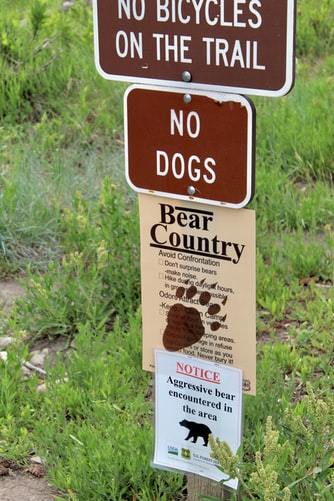
COOKING IN CAMP
🗹 2 Coolers (food & drinks)
Pro Tip: Keep your cool with a cooler. Carrying an able-sized cooler is crucial in keeping your goods and drinks safe and fresh. Here are some tips to make your cooler even cooler to keep your food and drinks ice-cold the way you like it.
✓ Pre-chill food and container before loading inside the cooler
✓ Pack the cooler in order to maintain the cold. Less space also opts for less cooling trapped warm air.
✓ Use two separate coolers for food and drinks. People usually tend to keep on opening the cooler to look for drinks and this will reduce the effect of the cooler for both the food and drinks.
✓ Cover the cooler with a blanket, sleeping bag, or pad and keep it in the shade while it’s in the car and at camp to improve its cooling effect.
🗹 Large Water Jug / Dispenser
🗹 Portable Burner / Stove
🗹 Reusable Lighter / Waterproof Matches
🗹 Cooking Pot w/ Lid
🗹 Frying Pan
🗹 Tin Foil - You can basically cook anything over the fire using aluminum foil!
🗹 Potholder
🗹 Food Containers (bags, foil)
🗹 Bowls / Plates / Cups
🗹 Folding Spork
🗹 Cooking Utensils
🗹 Cutting Board
🗹 Foldable Knife
🗹 Dish-Washing Basin
🗹 Biodegradable Soap (for dishes)
🗹 Sponge
🗹 Microfiber Towel for dish
🗹 Garbage / Recycling bags
🗹 Paper Towel
🗹 Bottle Opener / Corkscrew
🗹 Can Opener
🗹 Coffee Pot
🗹 Griddle
🗹 Grill Rack
FOOD & DRINKS
🗹 Water
🗹 Ice
🗹 Dehydrated Meals
🗹 Instant Coffee Packets
🗹 Instant Oatmeal
🗹 Ramen / Noodles
🗹 Dried Fruits
🗹 Granola Bars / Other Snacks
Pro Tip: Plan your camp meals. Consider ready made or easy to cook meals. You can also cook healthy (and delicious) meals using an aluminum foil. Check out the awesome recipes here!
SAFETY / EMERGENCY ITEMS
Don’t forget to pack your first aid kit and some emergency energy bars, water filter bottle and a lifestraw. These will be the basics for your survival should something unexpected happen.
🗹 Headlamp & Extra Batteries
🗹 Flashlight / Hand Torch
🗹 Daypack
🗹 Water Bottle w/ Filter
🗹 Multi-tool
🗹 Whistle
🗹 Map / Compass / GPS
PERSONAL ITEMS
🗹 Phone & Charger (w/ case)
🗹 Cash or Credit Card
🗹 ID
🗹 Permits / Reservations / Fees / Licenses
🗹 Duffle bag & Stuff Sacks
TOILETRY & HYGIENE
You don’t necessarily need to change clothes everyday as you camp, but it’s best if you keep yourself feeling fresh and clean, even when showering is not an option. Pack a two-in-one hygiene and toiletry kit to organize and keep your sanitation station in one pack.
Also, don’t pack anything with a strong smell. Don't bring perfume or anything that can attract bears and other wildlife. The last thing you would want is to end up drawing the attention of hungry animals towards your camp. Again, nothing too smelly.
🗹 Toilet Paper
🗹 Hand Sanitizer
🗹 Toothbrush, Toothpaste, Floss
🗹 Lip Balm
🗹 Sanitary Products
🗹 Biodegradable Soap & Shampoo
🗹 Microfiber Bath Towel
🗹 Moisturizer
🗹 Sunscreen
🗹 Deodorant Wipes
🗹 Bath / Body Wipes
🗹 Portable Camp Shower
🗹 Toilet Waste Bags
🗹 Wash Cloth
🗹 Eye Masks / Ear Plugs
🗹 Comb / Brush
FIRST AID KIT
Never leave without a first aid kit. Anything can happen in the wilderness. Be it just minor cuts and scrapes, sunburn, bug bites, an upset stomach, headache or pain, you've got to be prepared. Pack a medicine kit that is light yet can carry everything that you will need in an outdoor emergency.
🗹 Bandages
🗹 Moleskin or Tape (for blisters)
🗹 Antiseptic Wipes
🗹 Antibacterial Ointment
🗹 Prescribed Meds & Vitamins
🗹 Ibuprofen (for headache)
🗹 Antacids (for stomach ache)
🗹 Antihistamine (for allergies)
🗹 Insect Repellent
🗹 Aloe (for sunburn)
🗹 Tweezers & Scissors
CLOTHING & FOOTWEAR
🗹 Clear Packing Cubes - Organize your clothing, gear, & toiletries! Use clear packing cubes to organize your clothing and camping gear. This will make it easier for you to know what's inside at a glance and use them. The clear cubes will also keep your items safe and stored away from dust and critters in the camp. Super convenient when you are on the move! When you have packing cubes, you don't have to pack and unpack so many things and create clutter.
✓ Medium Cube - Suitable for your tops & bottoms, pajamas, rain gear, and other clothing items.
✓ Small Cube - Keep your repair tools like multi-tool, duct tape, extra cord, tent-pole repair sleeve, etc. close or at your disposal. A clear cube will make it easier for you to locate and know the contents.
✓ Extra Small Cube - Organize your toiletries, hygiene kit, and first aid kit.
🗹 Quick-Dry Pants & Shorts - Don’t bring denim jeans. They restrict your movements too much and make it uncomfortable for you to do any walking, hiking, or climbing.
🗹 Wicking Shirts / Tanks
🗹 Underwear, Socks (bring extras!)
🗹 Light Fleece / Jacket
🗹 Hiking Shoes / Boots
🗹 Hats
🗹 Sunglasses
🗹 Long-Sleeve Shirt (sun & bug bites protection) - Leave behind white garments. Bring earthy colors that are not too dark nor too bright. Just pack light and easy-to-wash clothes, and definitely don’t overpack!
🗹 Rain Jacket & Pants
🗹 Base Layer Top & Bottom
🗹 Warm Insulated Jacket
🗹 Wool Pants
🗹 Gloves or Mittens
🗹 Swimsuit
🗹 Sandals / Water Shoes (in a travel shoe bag)
🗹 Camp Shoes / Slip-ons
🗹 Pajamas
🗹 Umbrella
🗹 Bandana
CAMPFIRE (Optional)
🗹 Hatchet or Folding Saw
🗹 Firestarter
🗹 Firewood
🗹 Tarp
🗹 Roasting Forks (for s'mores / hotdogs)
MISCELLANEOUS (Optional)
Consider heavy gadgets as dead weight. Don't bring unnecessary electronics. Laptops, iPod, or tablets are definitely out of the picture. Your phone, GPS device, and a waterproof portable bluetooth speaker will do for primary tech needs & entertainment.
🗹 Games (dice, cards, etc)
🗹 Music Player
🗹 Reading Material / Notebook & Pen
🗹 Hiking Guides / Maps / Field Guides
🗹 Instruments
🗹 Binoculars
🗹 Dog Gear
🗹 Sports / Fishing Gear
🗹 Bicycle
🗹 Star Chart
🗹 Drawing Book / Canvas & Paint
Got everything you need from this camping packing checklist for your trip? Remember, you don’t need to spend money on all the equipment. If you’re camping alone, you can always rent or borrow from a friend or family member. However, if you’re planning to make camping a frequent affair, then you can invest in reliable tools and gear.
But if you’re going to camp with family or friends, chances are, you’re going to split up some of the gear. If someone already has a camping table, scratch that off your list. If someone’s got a tent that you can share, you don’t need to hassle with one. If you don’t have camping chairs, just use some logs or sit on the ground with a towel. You get the idea.
This ultimate camping list is just a guide for you to get started. The more camping you do, the easier your list will become. A camping list is something you fit to your needs. What are you waiting for? Start packing!
#HappyCamper
0 comments
